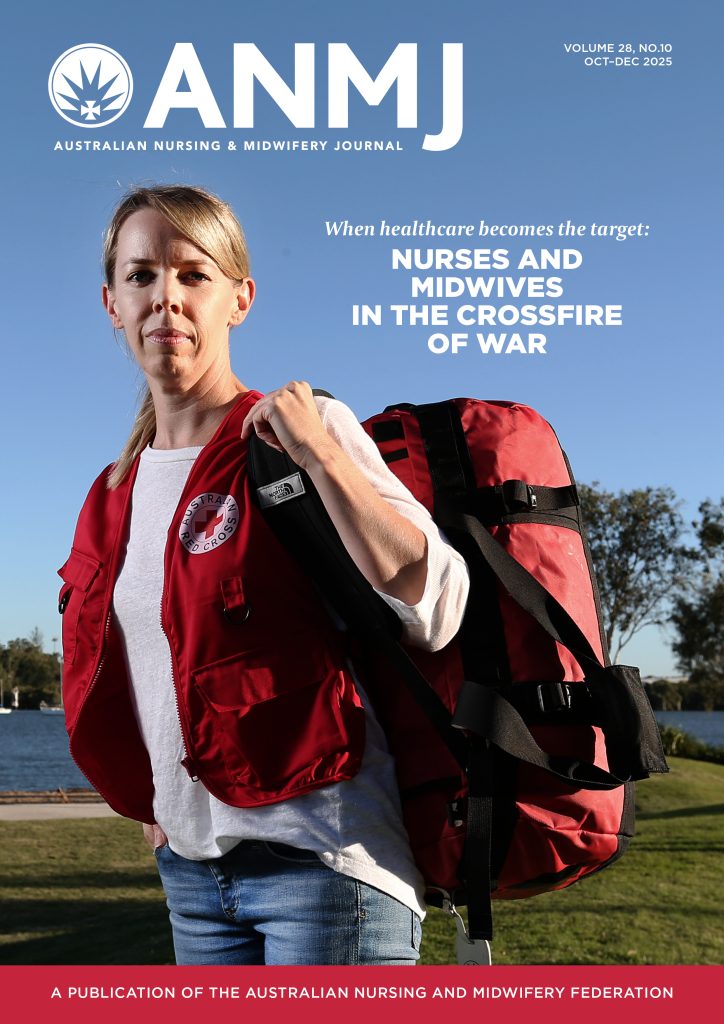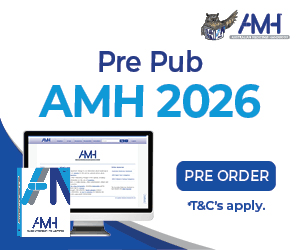The Australian Nursing and Midwifery Federation (ANMF) is focused on driving meaningful change in 2025 to ensure better conditions for nurses, midwives, carers, students and to meet the health and aged care needs of the community
Recognising the critical milestones we have already achieved like wage increases and mandated care minutes, we know progress is possible.
The ANMF’s vision is to prioritise reforms that support recruitment and retention, empower nurses and midwives to work to their full scope of practice to ensure accessible and affordable healthcare, and deliver improved outcomes for women.
The ANMF remains committed to the development of strategies to: enhance the recruitment of nurses and midwives, especially new graduates; reduce undergraduate attrition; and address workforce retention.
Unsustainable workloads are a key driver of the workforce crisis. The ANMF is advocating for a range of strategies to improve retention, including: increasing nurse practitioner positions, boosting the nursing and midwifery workforce through scholarships, increasing support for continuity of care models, improving clinical placements, and increasing support for RUSON and RUSOM models of care, and exploring financial incentives like allowances.
After years of lobbying by the ANMF, recent introduction of Commonwealth Prac Payments for nursing and midwifery students from 1 July 2025, may help stem undergraduate nursing and midwifery student attrition. The $319.50 a week (means-tested) provides some financial support for students while undertaking their 800 hours unpaid mandatory clinical placement.
The much-awaited National Nursing Workforce Strategy is due to release its report in 2025. The strategy will provide a national approach to shape the future of nurse workforce planning, investment and reform in Australia. The strategy has come out of the Nursing Supply and Demand (2023-2025) study which found unsurprisingly that our supply of nurses will not meet future demand.
Similarly, the Midwifery Futures report, commissioned by the Nursing and Midwifery Board of Australia (NMBA), exposes widespread staffing shortfalls, especially in non-metropolitan areas. The report makes 32 recommendations including in the scale-up of midwifery models of care. This includes to attract, educate, and retain the Aboriginal and Torres Strait Islander midwifery workforce and maintain ongoing initiatives such as Birthing on Country programs.
Both complement other government blueprints including the Nurse Practitioner Workforce Plan, Independent Review of Overseas Health Practitioner Regulatory Settings, and Unleashing the Potential of our Health Workforce (Scope of Practice) Review in how to tackle our critical workforce challenges.
Recommendations to enable nurses and midwives to work to their scope of practice in the Unleashing the Potential of our Health Workforce – scope of practice review, will give help provide greater job satisfaction, recruitment and retention of nurses and midwives. Where nurses and midwives have been unable to work to their scope, this has reduced their ability to undertake the work for which they were educated, leading to deskilling and reduced job fulfilment. The ANMF will work with other key nursing and midwifery peak bodies and stakeholders, to see key recommendations are adopted. Many of which align with the ANMF’s position on increasing nursing- and midwifery-led models of care which evidence supports leads to better access and health outcomes.
WINS
- Removal of collaborative arrangements for nurse practitioners and endorsed midwives
- Increased Medicare rebates by 30% for standard consults with a nurse practitioner
- New Medicare rebate for a 60-minute consult with a nurse practitioner, and a range of new Medicare rebates for pregnant women and new mothers to benefit from high quality midwifery care
- From 1 July 2025 nursing and midwifery students are eligible to receive a Commonwealth Prac Payment to help support them financially while they do the practical part of their degree
ASKS
- Supporting funding for nurse-led and midwife-led models of care, including additional free nurse-led walk-in clinics and midwifery-led clinics that employ NPs, advanced practice nurses, endorsed midwives and midwives with provision for supported students’ placements
- Commonwealth funding to support nationally consistent structured student employment programs across the country
- Increasing funding for Commonwealth Supported Places (CSP) for nurses and midwives to undertake postgraduate studies
- Scope of Practice recommendations enacted, with legislation that allows NPs and endorsed midwives to their scope of practice
- Appointment of a Commonwealth Chief Midwife
- Fund a National Midwifery Strategy including an implementation plan
- Strategies to increase the number of Aboriginal and Torres Strait Islander midwives, and midwives from culturally and linguistically diverse backgrounds
- Funding for pilot sites midwifery-led primary care clinics in regional, rural and remote areas for women’s health
- Funding of incentive based programs, education and mentorship, particularly for new graduates








